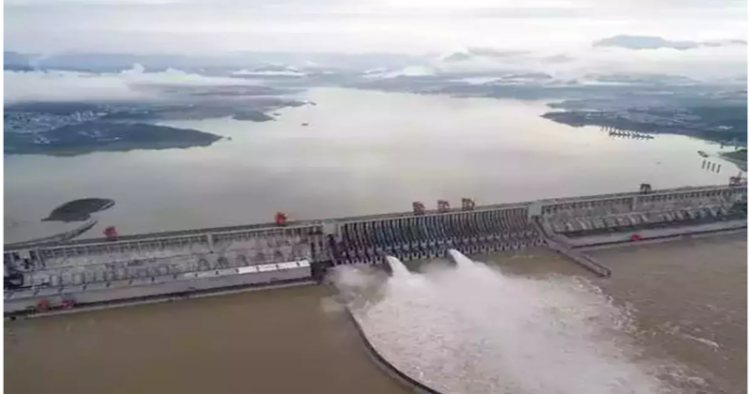In northeastern India, Arunachal Pradesh is a region that holds great strategic importance and has ongoing political tensions. China’s interest in Arunachal Pradesh is driven by several factors, including access to vital water resources like the Brahmaputra River, historical claims to the area, and broader goals in the region. These motivations are key to understanding the complex relationship between China and India, influencing stability across South Asia. China has one of the lowest amounts of freshwater per person in the world, making it difficult to meet its increasing water needs. The Brahmaputra River, called the Yarlung Tsangpo in Tibet where it starts, flows through China and then into India and Bangladesh. This river is crucial for farming, generating hydroelectric power, and providing water for people in the region.
China’s control over the upper reaches of the Brahmaputra River, which flows through Tibet, grants it significant influence over the river’s water flow downstream. This control has raised concerns among neighboring countries, particularly India and Bangladesh, which rely heavily on the Brahmaputra for their water supply. There is apprehension that China might leverage this control to construct dams or other infrastructure projects. Such developments could alter the river’s natural flow, potentially impacting the availability of water for agricultural, industrial, and domestic use in downstream regions.
The potential for China to regulate the Brahmaputra’s flow poses a strategic advantage, especially during periods of water scarcity or heightened political tensions. If China were to implement measures that restrict or alter water flow, it could create challenges for India and Bangladesh in managing their water resources. This scenario underscores the geopolitical implications of China’s actions in the region, as control over a critical water source could translate into significant leverage in diplomatic and economic interactions. Consequently, the situation calls for cooperative management and transparent communication between China and its downstream neighbors to ensure sustainable and equitable use of the Brahmaputra River’s resources.
Interestingly, while two-thirds of the Brahmaputra flows through China, most of its water actually collects in Arunachal Pradesh. A hydrological study from 2000 revealed that only 20% of the Brahmaputra’s water is from China, with the majority coming from Arunachal. This indicates that China has less control over the river’s flow than previously thought. However, water security is still a major concern for both China and India, affecting their relationship and regional stability.
https://x.com/ByRakeshSimha/status/1802568721288069151?t=pqppJk8Fi1KNelmol65UrQ&s=08
China’s interest in Arunachal Pradesh goes beyond water. The area is strategically important because it borders Tibet and Myanmar, making it crucial for China’s regional influence and military strategy. India considers Arunachal Pradesh an essential part of its territory. The region is culturally diverse, with Tibetan and various tribal communities. China’s claim to Arunachal Pradesh is based on historical grounds, which India strongly denies. This territorial dispute has led to tensions and occasional military standoffs between China and India.
China’s geopolitical strategies in Arunachal Pradesh are part of its larger goals in South Asia and beyond. By trying to control or influence this region, China seeks to strengthen its strategic standing against India. This could give China an advantage in any future border disputes or regional conflicts with its neighbor.
In short, while water resources are a main reason for China’s interest in Arunachal Pradesh, other political and strategic reasons are just as important. The area’s location, cultural diversity, and disputed status make it a key issue in China-India relations and regional politics. The ongoing border dispute shows the complicated nature of their relationship and its effect on stability in South Asia. Thus, China’s aims in Arunachal Pradesh involve both securing resources and gaining a strategic advantage, affecting its wider policies in the Indo-Pacific region.



















Comments